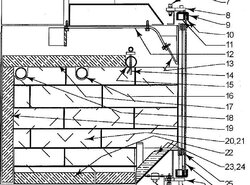First I have to say I am not burning ideally seasoned wood.. Im burning exclusively white ash. What I've found is many times I've started a burn with slightly darkened glass on my napoleon 1402 and after a few hours I have completely clean class and with light-tan fire bricks. During this time I often see NO secondary burning. Am I burning cleanly or am I building up cresote because I dont have a strong secondary burn?
When I burn the "wetter" logs (about 60% of the time), I've found I have to keep the damper nearly fully open to keep active flames going, but I still have clean glass with the light-tan fire bricks.
What do you think? Is clean glass/light firebrick always a good indicator of an efficient burn?
When I burn the "wetter" logs (about 60% of the time), I've found I have to keep the damper nearly fully open to keep active flames going, but I still have clean glass with the light-tan fire bricks.
What do you think? Is clean glass/light firebrick always a good indicator of an efficient burn?


